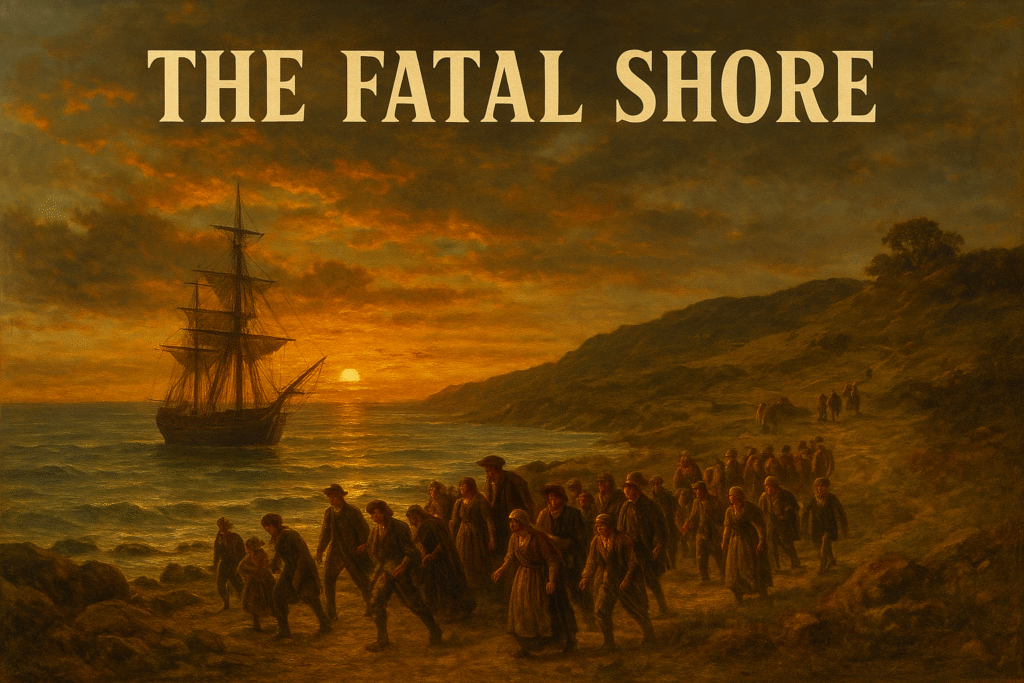The Fatal Shore from 1986. Robert Hughes basically turned Australia’s convict history into this huge, gripping story.
Back when he put out The Fatal Shore, Hughes didn’t just slap together some facts. He made this big narrative that really shifted how people saw Australia’s start. It’s part history, you know, part take on the culture, and part like a novel. That convict era stuff he covers, it’s still one of the books everyone reads about Australia. Even after all these years, close to forty now, it pulls in fresh readers. The research is solid, and the way he tells it, it’s vivid, like you’re there.
Looking at the convict story in a new way.
For a good chunk of the twentieth century, folks talked about Australia’s colonial days in this boring, official way. Textbooks in school, they just boiled it down to dates and a few names. But Hughes, he’s this famous art critic and writer, he did it different. He had that storyteller’s touch. Describing how they shipped British convicts over, he calls it one of the biggest forced moves of people ever. It’s all about punishment, hanging on, and changing.
In the book, Hughes says Australia’s who they are comes right from being a jail colony at first. From 1788 to 1868, over 160,000 guys, women, kids, they got sent across the ocean to this weird, rough place. He describes it like a movie. The ships all crammed, punishments that were brutal, fights between the bosses and settlers, and how people kept going through it.
Mixing smarts with real drama.
The thing that makes the book special is Hughes’ writing. He wasn’t some trained historian, but man, he could write. His sentences, they’re sharp, stick with you. He loves the gross parts, the exciting ones. Floggings, people running off, revolts, just the tough life in a strange spot. But he mixes in the thinking too. Like how Britain’s jails were packed, ideas from the Enlightenment on punishing folks, and all that empire stuff, it pushed them to take over Australia.
Some people reading it, they think the bloody details get too much, almost like he’s showing off. He doesn’t hold back on the violence, and those dramatic bits can hit hard. Still, that’s what opens it up to regular people around the world who skip the dry history books. The Fatal Shore, it’s literature as much as facts. People compare it to Barbara Tuchman’s A Distant Mirror, for how it pulls you in with the story.
Criticism and all that debate.
Ever since it came out, the book’s had its knocks. Some historians down under say Hughes played up the meanness of the convict setup too much. Made early colony life seem way darker than it was. Others mention how he doesn’t give much space to Indigenous Australians, even though colonization hit them so bad. Hughes owned up to it, said he stuck mostly to the European side, and yeah, later books fill in those holes.
But anyway, the gripes haven’t touched its impact. The Fatal Shore got people excited about Australia’s old days again. It pushed scholars and just curious folks to look back at the convict times differently. Helped knock down that idea of Australia as the lucky spot, reminded everyone the story has freedom and chances, but also the chains, the pain.
Why it keeps mattering.
These days, The Fatal Shore is still key if you’re into Australia’s roots. It’s not the full story of the nation, doesn’t get into the twentieth century or dive deep into Aboriginal ways. But for narrative history, it nails it. Hughes proves you can keep things right and make them fun, turn old papers into this tale of people pushing through.
For someone new to Australian history, it’s a wild way in. For Aussies, it’s like a mirror, sometimes nice, sometimes rough, showing that tricky past from the convicts. Read it as history, a book, or some culture take, The Fatal Shore changed the view of Australia for good.


